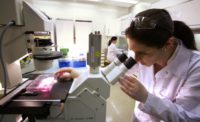The dairy processing industry is under constant pressure to improve its food safety systems. This pressure stems from improvements in public health surveillance (such as the expanded use of whole-genome sequencing) and a ramping-up of food safety requirements from regulators, further processing customers and consumers.
Additionally, because dairy processors are producing products being consumed by sensitive groups such as the very young, elderly and sick, in addition to the general population, the industry’s products and food safety systems must be designed, produced and executed flawlessly.
A supply chain-wide focus
An especially difficult challenge for the industry is more tightly controlling and understanding food safety across the entire supply chain. This includes inputs such as incoming raw milk and cream, as well as other ingredients that should be inspected, tested or approved prior to processing the finished product. It also includes communicating information about preventive controls to dairy purchasers, processors and consumers.
It’s necessary for companies to identify potential hazards and have preventive controls in place that are functional and validated. Prerequisite programs must also be in place and properly documented. For example, cleaning and sanitizing equipment and facilities must have exacting control of chemicals, temperature, pH, time and concentration — using verification sheets to ensure and document compliance.
Good manufacturing practices should be continually observed and followed. For example, foamers or sprays, if deemed important environmental pathogen-control points, must be functional at all times in the processing and packaging areas. Most important is documenting the sanitizer concentration and strength, a task that is often overlooked.
Environmental pathogen monitoring has become a standard in most dairy plants. Understanding exactly where and how samples should be taken and the procedure for immediate shipment to a qualified lab is critical. The lab should use methods that are validated for environmental samples. The ability to conduct cultural confirmation and some form of strain tracking is becoming increasingly important as facilities work to eliminate persistent environmental pathogen strains.
If asked to identify one of the most important points in an environmental monitoring program, site selection would be at the top of the list. With pathogens such as L. monocytogenes that are adept at taking up residence in a food processing environment, a seek-and-destroy mentality is crucial.
Don’t neglect the recall plan
The recall plan is a critical component for every dairy processing facility. It’s a valuable tool that you hope you never have to use. The time to develop a recall plan is now, as you never want to wait until your company is experiencing a recall to build a plan.
A good plan must be carefully prepared, with mock recalls being conducted at least twice per year. It is highly recommended to change the possible scenarios during your mock recalls. For example, mock recall scenarios may include packaging contamination, wrong usage of processing aids, a contaminated ingredient, improper sanitizer use, etc.
The take-home message regarding food safety is to have safe, reliable raw ingredients (milk is our largest) and plant prerequisite programs (especially cleaning and sanitizing) in place with verified success, clean and efficient processing and packaging, excellent cooling/freezing and proper distribution of finished products. Documented validation studies of the critical limits and procedures for reducing or eliminating the food safety risk for products that are outside of the Pasteurized Milk Ordinance is an additional focus by the FDA to ensure food safety.

